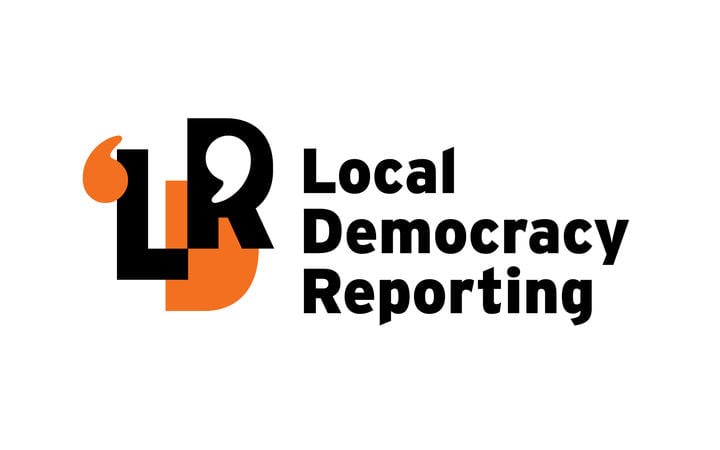Scarlett Wrasse were the second-most numerous fish, found among the 39 separate species of sponges. Photo / Project Reef via LDR
A high-tech search of the seabed near Pātea has found an unexpected bounty of reefs teeming with life, alongside a zone targeted by a would-be seabed miner.
The sonar survey by the National Institute of Water and Atmospheric Research (NIWA) found the wide continental shelf of the Pātea Banks is studded with rocky reefs unusually far from the coast.
NIWA said the reefs were much more common and widespread than scientists had thought and were in a 'goldilocks zone' for sea life.
The reefs are rich with thriving plants and animals: Shallow waters allow sunlight to reach the seabed, yet the reefs are far enough offshore to minimise sedimentation from rivers and erosion.
The findings come as Trans-Tasman Resources (TTR) waits for the Environmental Protection Authority to decide whether it can suck up 50 million tonnes of the nearby seabed annually for 35 years to extract iron, titanium, and vanadium.
The mining ship would discharge 45m tonnes of sediment back into the marine environment each year, in an area between 22km and 36km off the Pātea coast.
Opponents - iwi with mana moana, fishing interests and environmentalists - say the waste plume would smother seabed life and mining noise would harm marine mammals.
The Supreme Court last year told the EPA that if it could not impose conditions that prevent environment harm, the discharges must be prohibited and the mining application denied.

Blue Cod were the most common fish sighted, with breeding nurseries found at four sites. Photo / Project Reef via LDR
The sonar only mapped within the 12 nautical mile (22km) territorial limit, but the report said fishing trawler by-catch revealed that sponge gardens - which grow on reefs - extend beyond territorial waters.
The survey found 14 reefs covered in kelp forests, macroalgal meadows, gardens of 39 species of sponge, and fields of bryozoans - simple sedentary animals originating some 460 million years ago.
Blue cod, scarlet wrasse, butterfly perch, leatherjackets and terakihi dominated the 30 fish species identified, also including snapper, trevally, kingfish, and kahawai. There were blue cod nurseries at four sites.
"The unusual distance of these reef systems from shore, occurring on a wide shallow continental shelf, makes them relatively unique in the New Zealand context, and may have protected them (in part) from land-based impacts seen elsewhere," the report said.
"They are worthy of careful management by the Taranaki Regional Council, and other governance entities."
NIWA's survey was sparked by Project Reef, a citizen science study of a single reef off Pātea which began in 2016 because of concerns over the seabed mining proposal.
Project Reef was begun by the South Taranaki Underwater Club with partners Ngā Rauru, Ngāti Ruanui and TRC, gaining funding from the Ministry for Business, Innovation and Employment and working with local high school students.
Project Reef called on NIWA, which in June 2020 sent the Kaharoa to carry out a high-resolution sonar scan of the Pātea Banks, revealing almost 10 percent of the 62km2 surveyed area was likely to be reefs.
In March 2021 NIWA returned on the Ikatere, towing an underwater video sled.
TRC won a government Envirolink grant to commission NIWA to fully analyse the collected data and the results were combined with Project Reef information in the NIWA report.
Little is known about the inshore seabed of the South Taranaki Bight. Research trawl surveys have avoided the Pātea Banks because of uncharted rocky reefs and frequent rough seas.

A New Zealand Eagle Ray was one of the rarer finds. Photo / Project Reef via LDR
"Paradoxically, there has been a wider general perception that subtidal reefs are rare in the region, and combined with the remote access and weather issues, this region has been one of the least studied coastal regions of New Zealand," NIWA said.
"Knowing what is where, and how much, is a fundamental requirement for effective resource management (however 'resource' is defined)."
TRC's environment quality director Abby Matthews this week presented NIWA's report to the council's Policy and Planning Committee, noting that "there is an obvious need to learn more about the remaining reef systems".
"The vast majority of rocky reefs on the Pātea Bank remain uncharted… There are likely many more reefs that are yet to be mapped."
Matthews said that during the Coastal Plan process the Department of Conservation and Forest and Bird highlighted the lack of spatial planning and mapping of significant sites in the Coastal Marine Area (CMA).
"The council's position on this at the time was that it would be prohibitively expensive to indiscriminately survey and map the entire Taranaki CMA, however, that we would take a strategic approach and capitalise on research and surveying opportunities as they arose."
Evidence presented by Project Reef has already seen its reef scheduled as an Area of Outstanding Natural Character in TRC's proposed coastal plan, joining the already-scheduled North and South Traps.
The NIWA report recommended more analysis of data already collected, to predict of habitat types, species, and their likely densities.
Dive scientists could make targeted collections of geological samples and high priority species, and local divers use Go-Pro cameras to take more underwater video.
It suggested Project Reef's citizen scientists could install drop-cameras from small boats across a wide range of sites quickly and cost-effectively.


